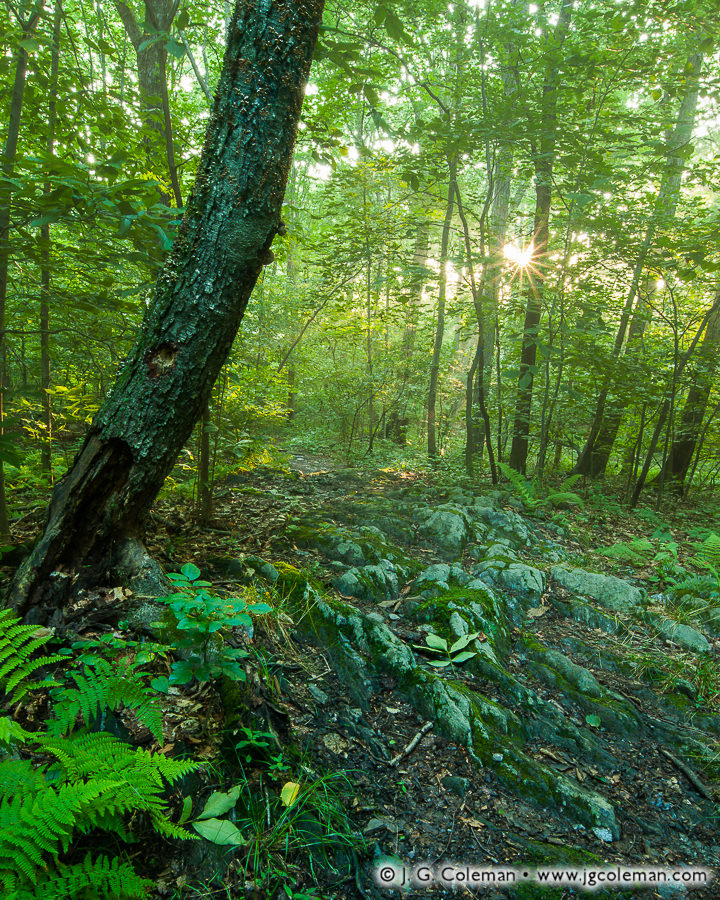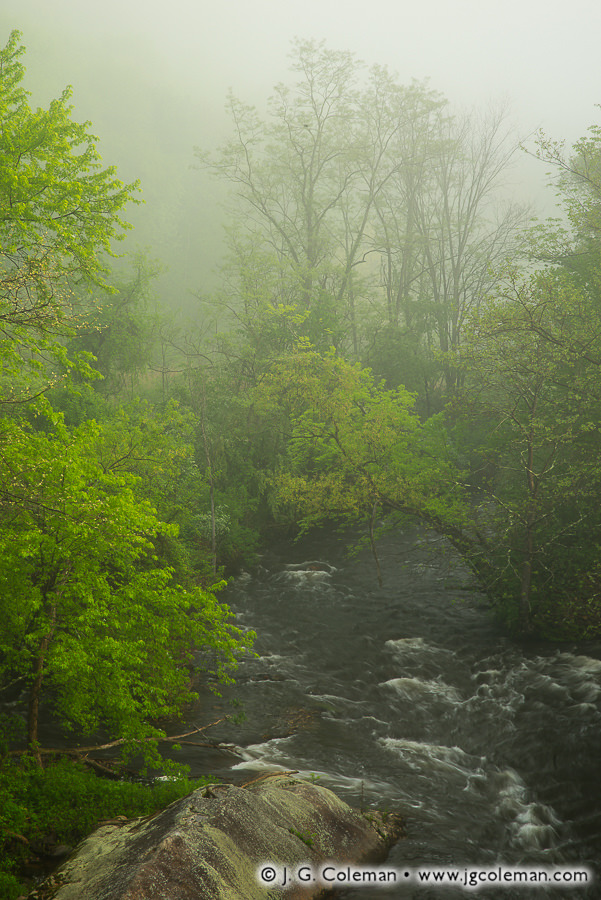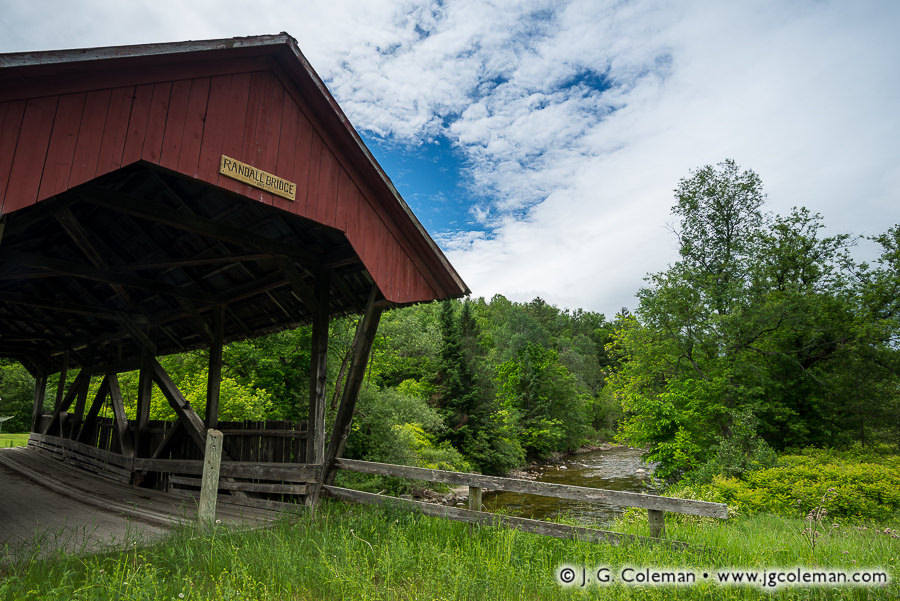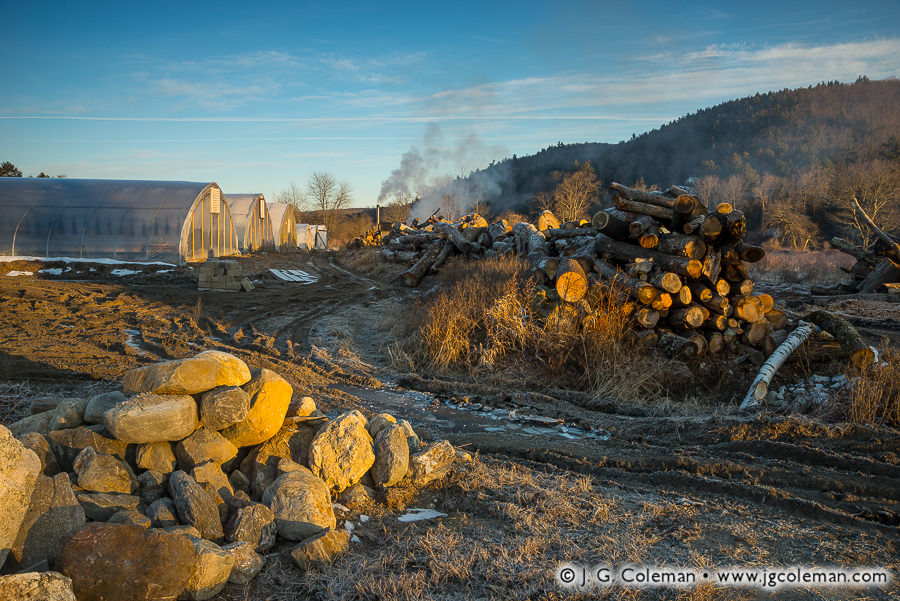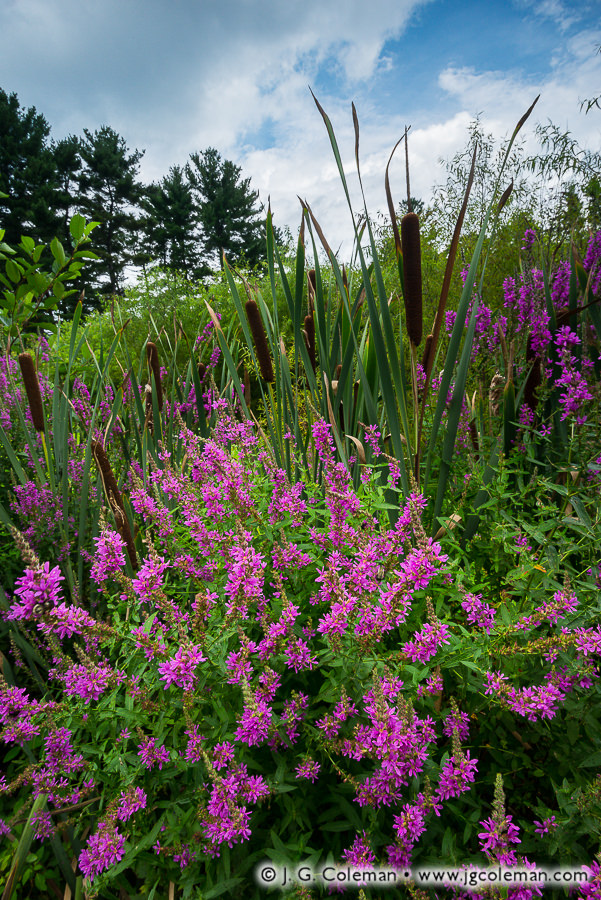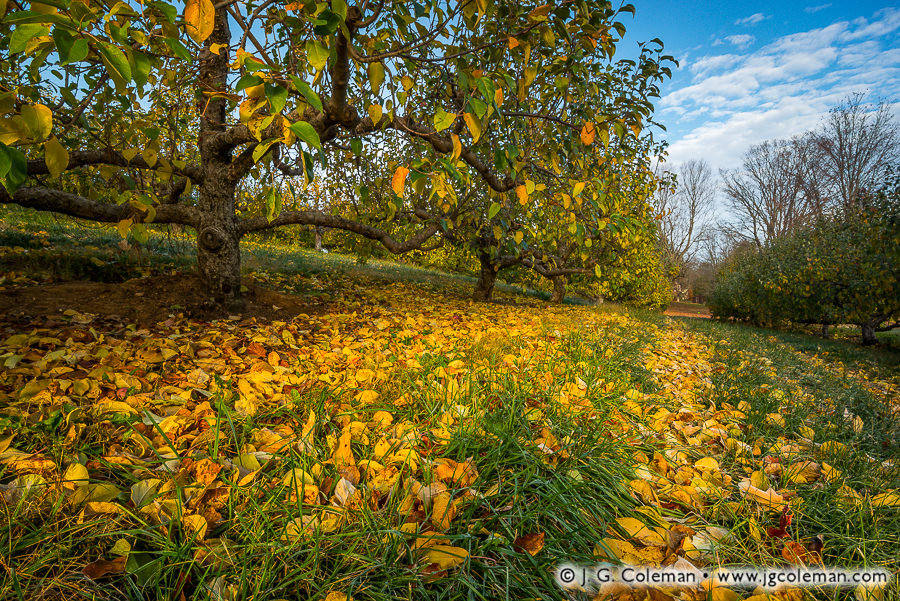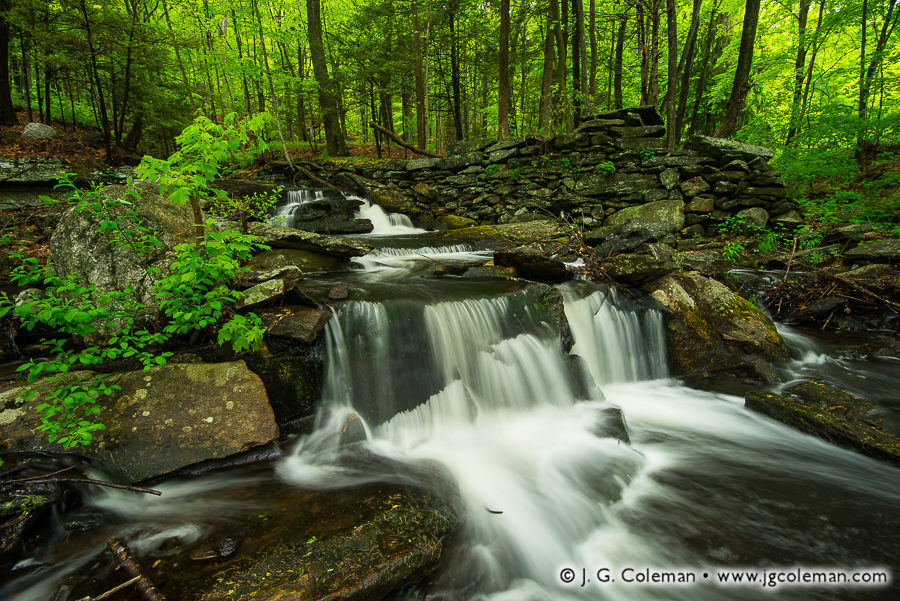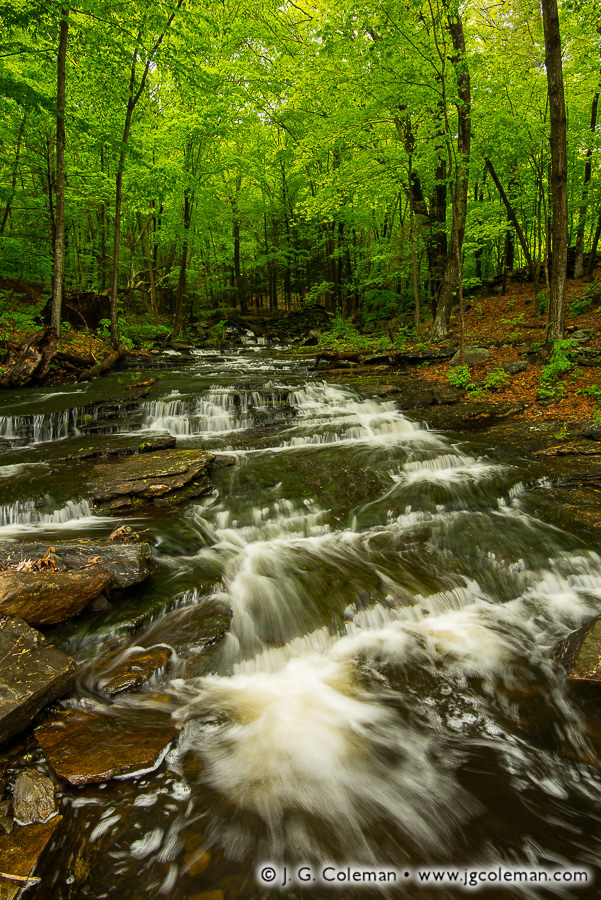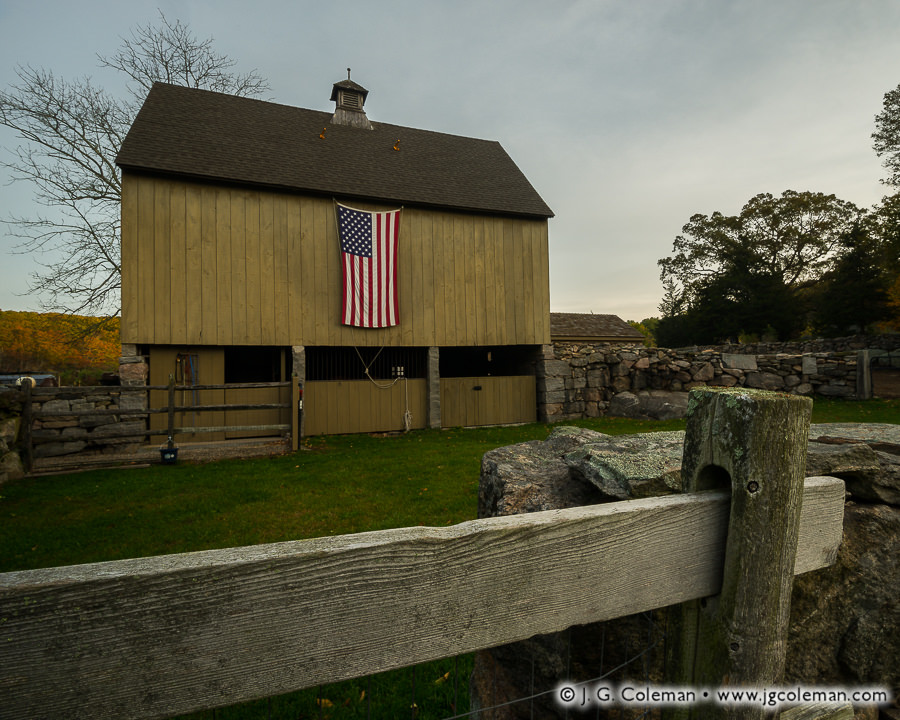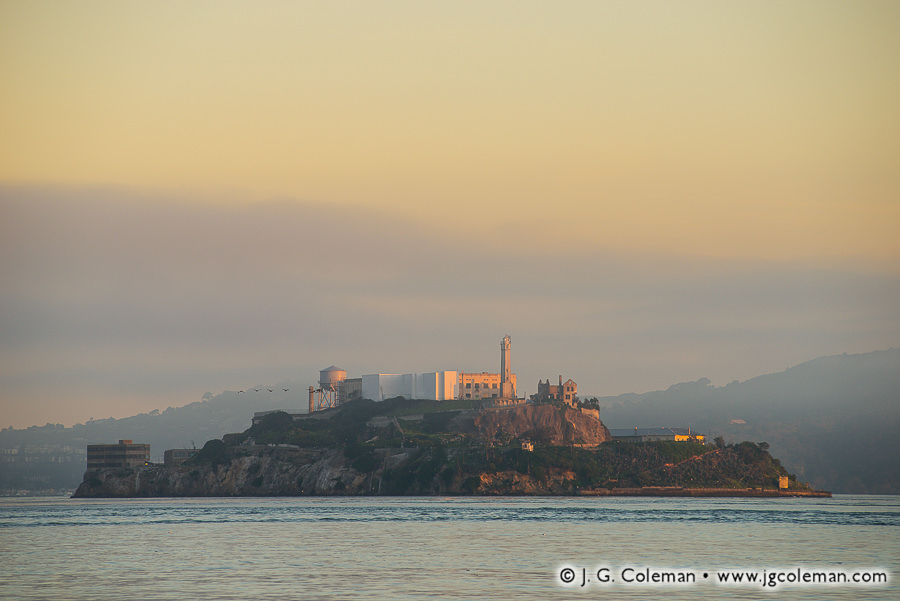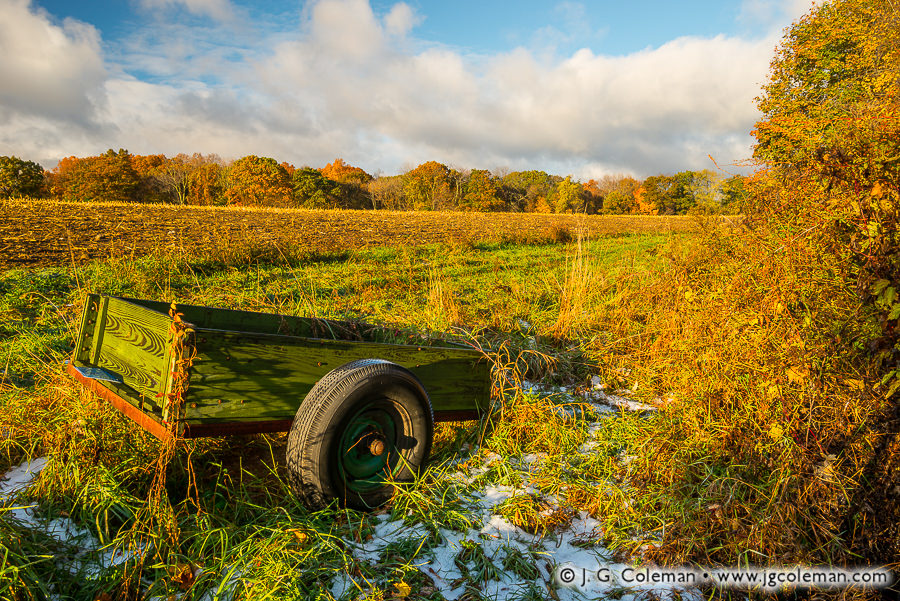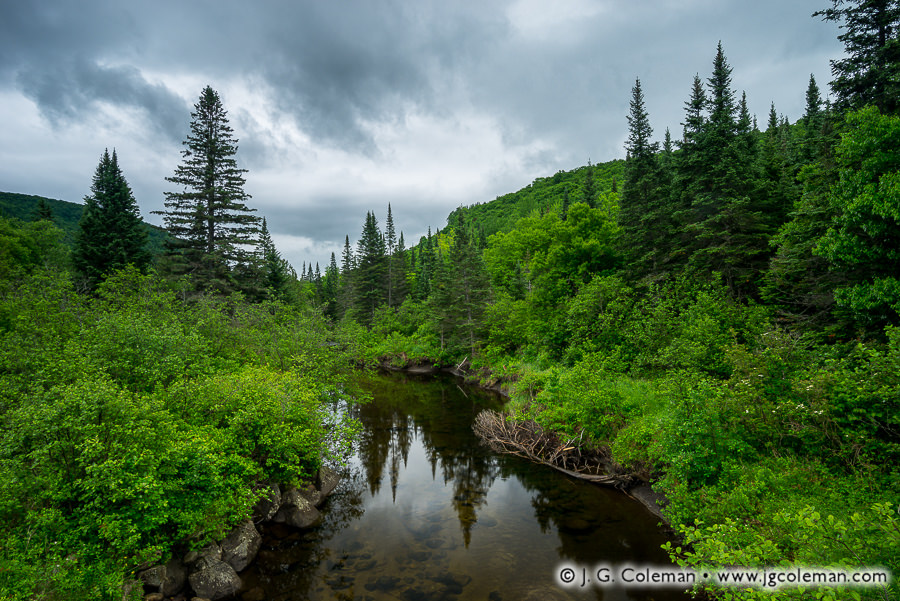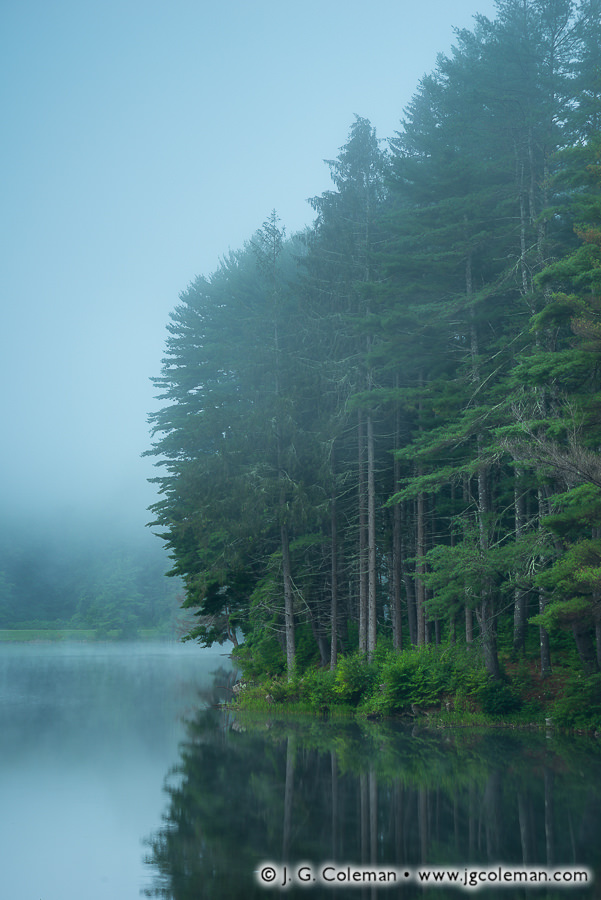
Wigwam Reservoir, Thomaston, Connecticut
A grove of pines stand shrouded with morning mist on the tranquil shores of Wigwam Reservoir, their towering trunks inverted in a mirror-like reflection upon the still water below.
While the Greater Hartford region and its thirst for water spawned such magnificent creations as the Barkhamsted Reservoir, several other cities elsewhere in Connecticut were similarly tasked around the turn of the 19th century with determining how they would bring sufficient water to their burgeoning populations. Waterbury, for example, is supplied by a system of five generous reservoirs, the first of which was Wigwam Reservoir up north in Thomaston on a tributary of the Naugatuck River.
Construction of Wigwam Reservoir began in 1893 with the clearing of land and preliminary dam work. A pipeline measuring three feet in diameter was routed about 10 miles to Waterbury the next year and, by 1896, water was flowing. It wasn’t until 1901 that the dam was finally built up to its full height, inundating the hundred-acre basin of Wigwam Reservoir with more than 700 million gallons of water.
Purchase a Fine Art Print or Inquire About Licensing
Click here to visit my landing page for “Wigwam Blue” to buy a beautiful fine art print or inquire about licensing this image.
Want to See More?
Be sure to check out all of my work from Thomaston, Connecticut.


